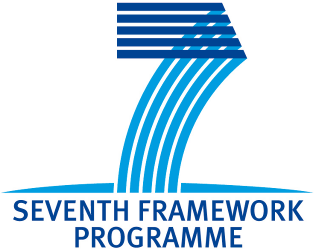Open Topics
Integrated accelerometry-based Fall Detection System
Background
Falls have an increasing social and economic impact,specially in the developed countries, as life expectancyof our elderly rises dramatically. Fall-related injuriesincreases morbidity, mortality and premature use of healthcare services reducing also the time the elderly can liveautonomously at their own homes. Fall detection systemsmay notify emergency responders when no one apart fromthe injured is present. However, their real-world applicationis limited by a number of factors such as high false positiverates, low-compliance, poor usability and short batterylifetime. In order to improve these aspects we developed afall detection algorithm with a low false alarm rate to beused in a miniaturized 3D accelerometer integrated in a beltbuckle - the actibelt® - developed at the Sylvia LawryCenter for Multiple Sclerosis Research. The following thesisconsist of implementing the fall detection algorithm in themicrocontroller of the accelerometer and programming anAndroid-based application in order to link the actibelt®to a smart phone for fall detection management and notification.
Master thesis 1:
Customized Android Interface for a fall detection system basedon a smart phone and a wireless acceleration sensor- the actibelt®BLU
Tasks:
Use case/Scenario description. Analyze the possible scenarios in which the fall detector can be used and the interaction with the user in order to define the requirements of the system.
Customize Android ROM (e.g., customize the status bar, restrict specific user applications)
User management (authentification, authorization, privacy management)
User-centered design and Android programming of interface adapted to disabled and elderly people. (It can include voice user interface)
Definition of the communication protocol
Fall alarm management (alarm prioritisation, alarm disabling, audible warning, alarm sending)
Emulator programming
Prerequisites:
good knowledge of programming (preferably Android)
Master thesis / Bachelor thesis 2:
Real-time implementation of an accelerometry-based fall detectionalgorithm on the MSP430 microcontroller of the actibelt®BLU
Tasks:
Rewrite/ refine the fall detection algorithm written in R-code into C code
Redesign plug-in interface for the communication protocol. Establish connection between actibelt®BLU and mobile phone (authentification, encryption)
Fall alarm management (according to the model which will be described in Master thesis 1)
Prerequisites:
Good knowledge of C
References:
[1] M. Daumer, K. Thaler, E. Kruis, W. Feneberg, G. Staude,and M. Scholz. Steps towards a miniaturized, robust and autonomousmeasurement device for the long-term monitoring of the activity ofpatients - ActiBelt. Biomedizinische Technik/Biomedical Engineering.2007; 52: 149-155.[2] A new method to estimate the real upper limit of the false alarmrate in a 3D accelerometry-based fall detector for the elderly.C. Soaz, C. Lederer, M. Daumer. In the Proceedings of the 34th IEEEAnnual International Conference of the Engineering in Medicine andBiology Society (EMBS). San Diego, California, USA. August 2012.DOI: 10.1109/EMBC.2012.6345915
Supervisors:
Cristina Soaz, M.Eng.Lehrstuhl für Datenverarbeitung (Prof. Diepold)E-Mail: cristina.soaz@tum.de , Tel.: +49 (0)89 289 23608
M.Sc. Munish Jassi,Chair of Electronic Design Automation (Prof. Schlichtmann)E-Mail: munish.jassi@mytum.de, Tel.: +49 (89) 289 – 23651
External supervisor:
Dr. Martin DaumerScientific Director of Sylvia Lawry Centre- The Human Motion InstituteE-Mail: daumer@slcmsr.org,Tel.: +49 89 2060 269 50
Dr.-Ing. Dmitry ZhelondzUniversität der Bundeswehr München
Technology provider:
Trium Analysis Online GmbH
Advisor:
Prof. Dr.-Ing. Klaus DiepoldLehrstuhl für Datenverarbeitung
Finished Theses
Alexander Schaermann, PhD-Thesis with TUM Munich, Dept. forElectrical Engineering and Information Technology, Prof. MarcZornow: Systematische Bedatung und Bewertung umfelderfassender Sensormodelle, 2020
Christoph Horlebein, Master-Thesis with Rehabilitation EngineeringLab (ETHZ), Prof. Roger Gassert: Design of an Experimental Setupand Evaluation of Neural Coupling Reflex Detection, 2019
Ryan Ramsey Hosn, Bachelor-Thesis with TUM Munich, Dept. forElectrical Engineering and Information Technology, Prof. KlausDiepold: Jump Asessment with Mobile Sensors, 2019
Raphael Altmik, Master-Thesis with TUM Munich, Dept. forElectrical Engineering and Information Technology, Prof. KlausDiepold: Implementation of the web-based platform "IndiBelt",2018
B. Eng. Karl Müller, Master-Thesis with TUM Munich, Dept.for Electrical Engineering and Information Technology, Prof. KlausDiepold: Verifizierung eines mobilen Akzelerometers hinsichtlichseiner Messgenauigkeit und Zeitgenauigkeit, 2017
Christopher Weber, Master-Thesis with Chair of Data Processing,TUM Electrical and Computer Engineering, Porf. Klaus Diepold:Die Dezelerationsfläche als prognostischer Parameter desfetalen Outcomes, 2016
M. Eng. Cristina Soaz PhD-Thesis with TUM Munich, Dept. forElectrical Engineering and Information Technology, Prof. KlausDiepold, Integrated Accelerometetry-Based System for functional Mobility Asessment and Fall Detection, 2015
Nicole Ellenrieder, Bachelor-Thesis with Prof. Manfred Wilhelm,Hochschule Ulm, Fakultät Informatik- Medizinische Dokumentationund Informatik: Statistische Analyse von Laufdaten und Untersuchungmöglicher Ansätze für einen Parameter zur Bestimmung derLaufqualität, 2015
Florentin Förschler, Bachelor-Thesis with Prof. MatthiasEdler-Golla, Hochschule für angewandte Wissenschaften München: Angewandte User Experience Optimierung am Beispiel'actibelt' - Bewegungsmessung in klinischen Studien, 2015
Paul Subkowski, Bachelor-Thesis with Prof. Klaus Diepold, TU Munich,Institute for Electrical Engineering and Information Technology:Entwicklung eines Schritterkennungsalgorithmus, 2014
Julia Katharina Widl, Dissertation zur Erlangung des Grades einesDoktors der Medizin:Die Verwendung des actibelt® zur Untersuchungvon morbogenen und pharmakogenen Einflüssen auf die körperliche Aktivität bei Patienten mit depressiven Störungen, 2012
Julia Christina Endres, Master Thesis with Donau-UniversitätKrems: Untersuchung zu funktionellen Parametern, Aktivität undTeilhabe in der Mobilität bei Schlaganfallpatienten, 2012
Nele Götze, Dissertation zur Erlangung des Grades eines Doktorsder Medizin: Untersuchung zur Validierung der Messung körperlicher Aktivität von Patienten mit Multipler Sklerose mittels Akzelerometrie / actibelt®, 2012
Matthias Fasching, Master Thesis with IMC University of AppliedSciences Krems, Austria: Exercise therapy in multiple sclerosis:state of research and recommendations for future trials, 2011
Michaela Schimpl, Bachelor/Master program in Science in Engineering, Biomedical Informatics; with University of Applied Sciences, Hegenberg,Austria: Automatic parameter extraction from 3D acceleromic data,2010
Alexandros Kokkalis, Master Thesis with Technical University ofMunich: Spatio-temporal parameter assessment of the human gait usingsimple biomechanical models, 2010
Fabian Franzelin: Bachelor-Thesis with Prof. Nassir Navab, TU Munich IT-Tools zur On- und Offline Analyse von Einzelschritten, die mit dem hochauflösenden 3D-Akzelerometer actibelt® aufgezeichnetwerden, 2009
Christoph Türmer, Bachelor thesis, with TU Munich, Institute forRealtime Computersystems, Prof. Färber/Chakraborty: Ganganalysefokussiert auf Stolpern mit Hilfe des 3D-Beschleunigungsmesssystems actibelt, 2009
Dipl. Stat. Alexandra Thiele with Prof. Dr. Ludwig Fahrmeir,Faculty for Mathematics, Informatics and Statistics, Departmentof Statistics, LMU Munich, 2009
Dipl. Stat. Martin Slawski. Regularization and sparsity indiscrete structures. Diploma Thesis, Faculty for Mathematics,Informatics and Statistics, Department of Statistics, LMU Munich,2008
Dipl. Tech. Math. Gerrit Kreuzer: Modellierung einer realistischenRaum-Zeit-Trajektorie aufbauend auf elementaren Bewegungseinheiten, DiplomaThesis with Prof. Spohn, Institute for Mathematics, TU Munich, 2008
Dipl. Math Celiné Schöne: Hidden-Markov-Modell und Autokorrelationsfunktion zur Bewegungs- und Gangklassifikation dreidimensionalen Beschleunigungsdaten. Diploma Thesis with Prof. Spohn, Institute for Mathematics,TU Munich, 2008
Dipl. Stat. Birgit Schrödle: Multi-state models for interval censoredevent history data: An analysis of multiple sclerosis progression, with Prof.Dr. Ludwig Fahrmeir, Faculty for Mathematics, Informatics and Statistics, Departmentof Statistics, LMU Munich, 2008
Dipl. Stat. Christine Porzelius: Microarray-based prediction with emphasison clinical parameters. Prof. Tutz, Department of Statistics, LMU and Prof.Strimmer, Institute for Medical Informatics, Statistics and Epidemiology, University ofLeipzig. In Cooperation with Prof. Kappos, University of Basel, 2007
Dipl. Stat. Elisabeth Gnatowski: Stability of methods for the analysis ofdifferential gene expression. Diploma thesis with with Prof. Fahrmeir, Departmentof Statistics, LMU Munich and Prof. Strimmer, Institute for Medical Informatics,Statistics and Epidemiology, University of Leipzig. In Cooperation with Welcome TrustSanger Institute, University of Cambridge / National Blood Service and International Schoolof Technical Medicine and Clinical Bioinformatics / Porticus foundation., 2007
Dipl. Sport Science Lorenz Lachmann: Machbarkeit für Aktivitätsstudie bei MS Patienten. Dr. Tusker, Institute for Biomechanics, TU Munich, 2007
Dipl. Inf. Christof Niedermayr: Detection and removal of facial features in volume MRI scans diploma thesis with Prof. Navab, TU Munich, in cooperation with Rinnecker proton therapy centre, 2007
Dipl. Math. Franziska Bayer: Mathematische Aspekte der nichtlinearen intensitaetsbasierten Bildregistrierung, diploma thesis with Prof. Hoffmann, Institute for Mathematics, TU Munich and Prof. Wolinsky, Houston, 2007
B.Sc. Nadja Harner: Modellierung von Verweildauern für Patienten mit Multipler Sklerose (MS); Master Thesis with Prof. Fahrmeir, LMU Munich, 2007
Dipl. Phys. Thomas Goßner: Design of a motion model and validation using different tracking systems for continuous MS patient monitoring, TU Physics, with Prof. Navab, Computing Faculty and Computer Aided Medical Procedures, TU Munich, 2007
Dipl. Math. Katrin Noack, Klassifikation von Dezelerationen diploma thesis with Prof. Spohn, Institute for Mathematics, TU Munich und University of Fortaleza, Brasilien, 2007
Dipl. Math. Oec. Martina Güntner: Predicting the natural history of multiple scoerosis in patients seen from disease onset; diploma thesis with Prof. Unwin, Institute for Mathematics, University of Augsburg, 2007
Dipl. Math. Tech. Kathrin Thaler: Acquisition, preprocessing and analysis of high-resolving, 3-dimensional accelerator-data for the determination of the activities of MS-patients, with Prof. Spohn, Centre for Mathematics, Applied Probability Theory / Statistical Physics, TU Munich, 2006
Dipl.-Stat. Moritz Heinz: Validation Processes of Results in Biomedical Research Centres (german), with Prof. Ickstadt, Dept. of Statistics, University of Dortmund, 2005
Dr. med. F. Seiffert: An internet based system to assess the inter- and intraobserver variability of biosignals, with Prof. Schneider and Prof. Neiß, Obstetrics & Gynecology/Medical Statistics, Technical University of Munich, 2005
Master Stat. Nadja Harner, Bachelor thesis: Validation and Optimization of the FIGO Criteria for CTG Analysis, with Prof. Dr. Ludwig Fahrmeir, Faculty for Mathematics, Informatics and Statistics, Department of Statistics, LMU Munich, 2004
Dipl.-Stat. Anneke Neuhaus: Modelling time to progression, with Prof. Küchenhoff, Dept. of Statistics, LMU Munich, 2003















